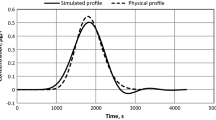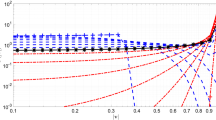Abstract:
In a special opportunity, detailed measurements of the flow in an overbank flow in the Flood Channel Facility at HR Wallingford were used in conjunction with tracer test data to assess the effectiveness of dispersion models based around random particle tracking (RPT). Ten different RPT models based on different assumptions and levels of information about the nature of the Lagrangian velocity field were investigated. Multiple simulations were used to calibrate variable parameters controlling the average magnitude of the perturbations for each model by comparison with observed concentrations at one cross-section. The calibrated models were then used to predict concentration distributions further downstream. Several of the calibrated models showed close agreement between observed and predicted concentration distributions. The most complex models using the most information about the velocity distributions were no better (and in some cases worse) in prediction than the simplest models investigated. It would appear that our knowledge of the system, despite the quality of the experiments, is too uncertain to infer a precise model structure.
Similar content being viewed by others
Author information
Authors and Affiliations
Rights and permissions
About this article
Cite this article
Hankin, B., Beven, K. Modelling dispersion in complex open channel flows: Equifinality of model structure (1). Stochastic Hydrology and Hydraulics 12, 377–396 (1998). https://doi.org/10.1007/s004770050026
Issue Date:
DOI: https://doi.org/10.1007/s004770050026




